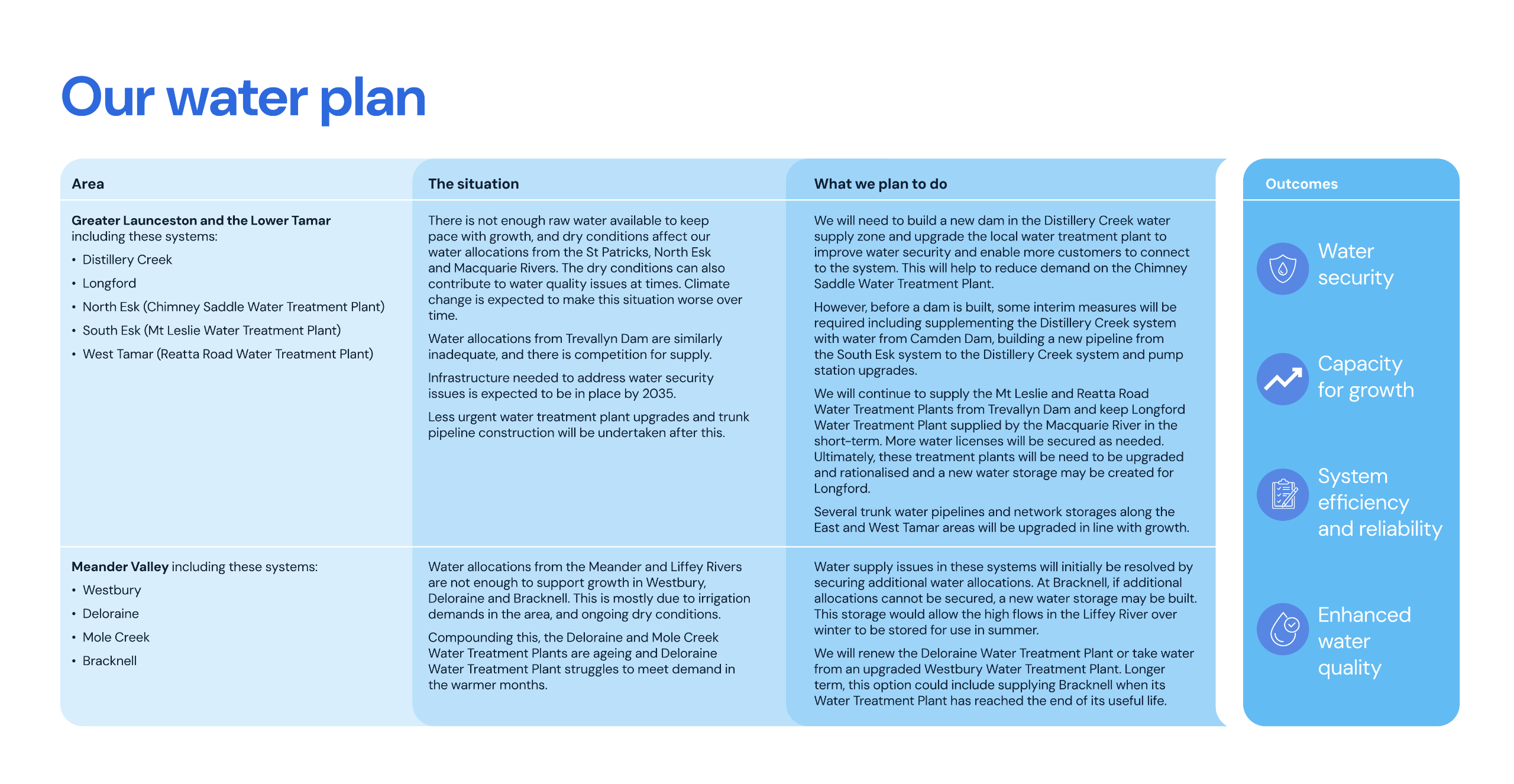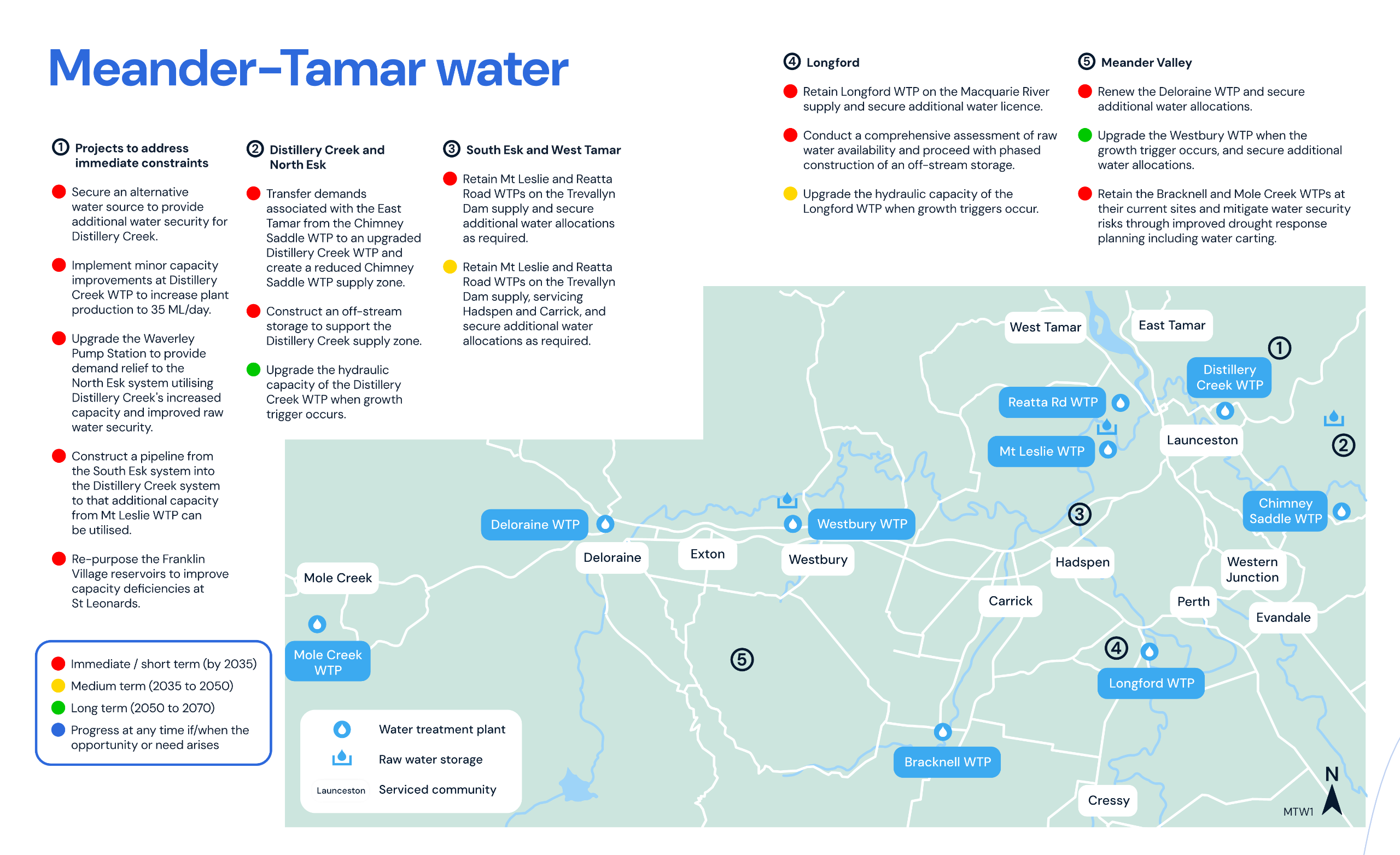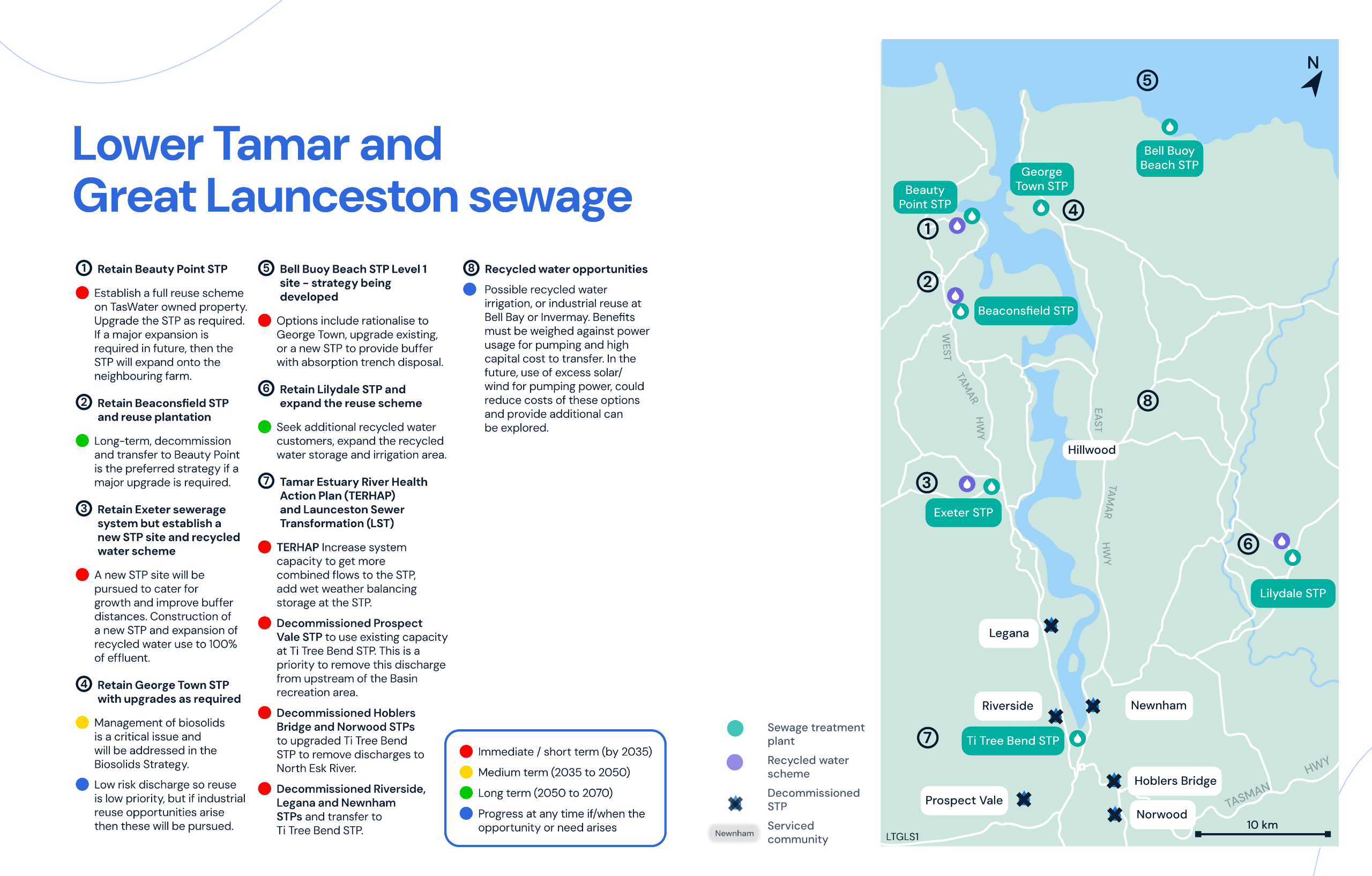Current services
The Meander-Tamar region includes Greater Launceston and nearby towns, with multiple water and sewerage systems, some of which are outdated. We're upgrading infrastructure, such as consolidating treatment plants at Ti Tree Bend, to reduce environmental impact and support ongoing growth in the area.










